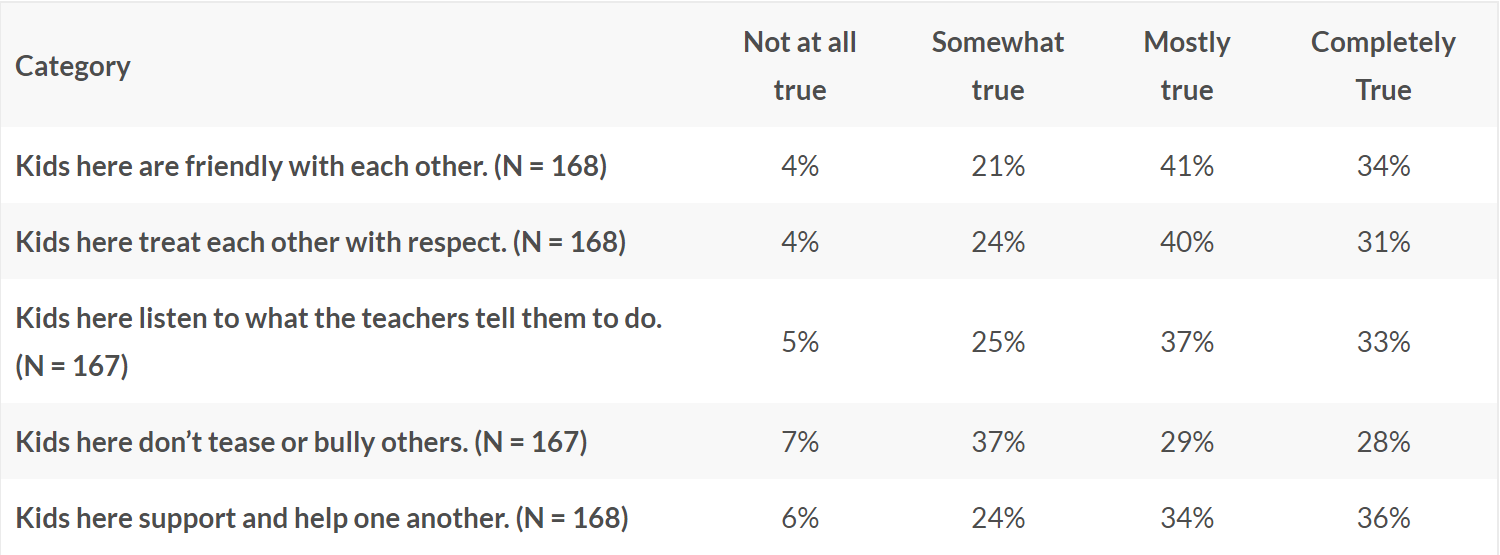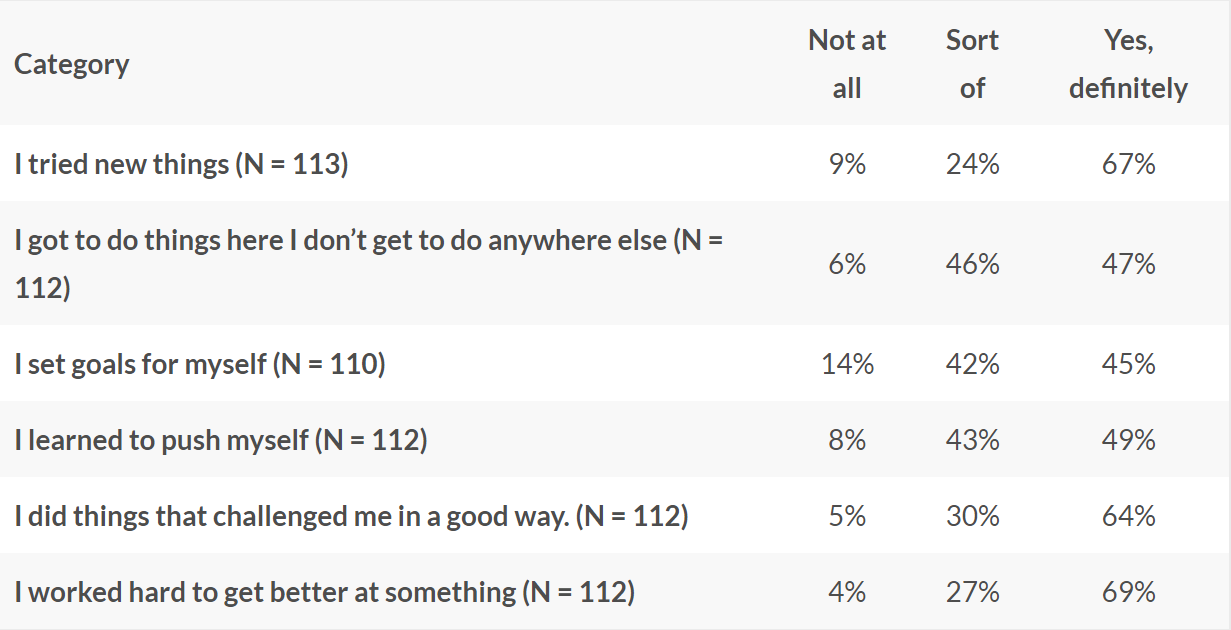
Non-academic outcomes have very profound implications on traditional academic metrics, both short term, and over the long haul. In order for our afterschool programs to affect positive change on academic assessments, grades, test scores, graduation rates, and post secondary degree or certification acquisition, we must support the whole child as a community. With this in mind, we provide support around student:
Attitudes and Beliefs
Behaviors - Attendance and Discipline Rates
Incarcerated Youth Mentorships
Resilience factors (buffers against negative effects of ACEs - Trauma)
Family Engagement & Well-Being
The most consistent behavioral benchmark this past year was the participation of our students both in school and in our afterschool programs. Consequently, we measured:
Absenteeism - The percent of Regular Attendees in our afterschool program who also regularly attended school, as determined by 5 or fewer school-day absences for the whole year.
Discipline- The percent of Regular Attendees that had 1 or more discipline records throughout the school year.
5 or fewer school-day absences during the school year for 21st CCLC Regular Attendees
C15
Prospect Point - 23% of Reg. Att.
Garrison - 30% Reg. Att.
Pioneer - 21% of Reg. Att.
Lincoln - No Data to Report (reported as school-day aggregate)
WaHi - 41% of Reg. Att.
C18
Berney - 30% of Reg. Att
Edison - 12% of Reg. Att.
Green Park - 16 % of Reg. Att.
Sharpstein -14% of Reg. Att.
The discipline (1 or more school-day referrals) rates among afterschool program Regular Attendees at each site.
C15
Prospect Point - 63% of Reg. Att.
Garrison - 78% of Reg. Att.
Pioneer - 74% of Reg. Att.
Lincoln - 50% of Reg. Att.
WaHi - 50% of Reg. Att.
C18
Berney - 59% of Reg. Att.
Edison - 2% of Reg. Att.
Green Park - 54% of Reg. Att.
Sharpstein - 76% of Reg. Att.
An annual programmatic survey conducted in Spring by OSPI to gauge afterschool attendees’ attitudes and beliefs about school and learning, based on their attendance in our programs
Cohort 15
How much do you look forward to coming to this afterschool program? (N = 172)
Young people might describe themselves in many ways. We have listed some things youth might say or think about themselves. How true is each statement for you? Choose the answer that is most true for you for each statement.
Young people might describe themselves in many ways. We have listed some things youth might say or think about themselves. How true is each statement for you? Choose the answer that is most true for you for each statement
How has this program helped you specifically? Pick up to THREE areas where you think the program has helped you the most. (N = 169)
Please indicate if you have had the following experiences in this afterschool program.
Thinking about the adults in this program, how true are these statements for you? In this program, there is an adult here…
At this program, how do kids get along? Indicate how true each statement is based on your own experience in this program.
Thinking about how you feel today compared to the beginning of the program, how interested are you in the following topics?
Cohort 18
Young people might describe themselves in many ways. We have listed some things youth might say or think about themselves. How true is each statement for you? Choose the answer that is most true for you for each statement.
How much do you look forward to coming to this afterschool program? (N = 111)
Young people might describe themselves in many ways. We have listed some things youth might say or think about themselves. How true is each statement for you? Choose the answer that is most true for you for each statement.
Please indicate if you have had the following experiences in this afterschool program.
How has this program helped you specifically? Pick up to THREE areas where you think the program has helped you the most. (N = 111)
Thinking about the adults in this program, how true are these statements for you? In this program, there is an adult here...
At this program, how do kids get along? Indicate how true each statement is based on your own experience in this program.
Thinking about how you feel today compared to the beginning of the program, how interested are you in the following topics?
Resilience is the set of individual skills and environments of support that buffer the negative effects of adverse experiences in our students’ lives. Annually, we measure these factors through a dedicated student resilience survey. The survey was not administered this past year due to COVID-19. The previous two full-years of study, however, demonstrated some promising results:
YEAR 1: Students who regularly attended the afterschool program showed increases in individual resilience.
YEAR 2: An increase in student resilience through the afterschool program also resulted in an increase in academic outcomes for those students.
Year 5: We have come to learn that students who attended our afterschool and summer programs previously, maintained and/or sprung back very quickly to pre‐pandemic SEL and resilience‐based levels compared to students who had not attended and/or regularly attended program previously. Afterschool supports led to higher levels of self‐value directly, and also indirectly through increasing trust, problem solving, and goals
Year 6 of the survey will be complete in October 2023.
We will continue to administer the resilience survey in the coming school year.
We will continue to administer the resilience survey in coming school year.






















